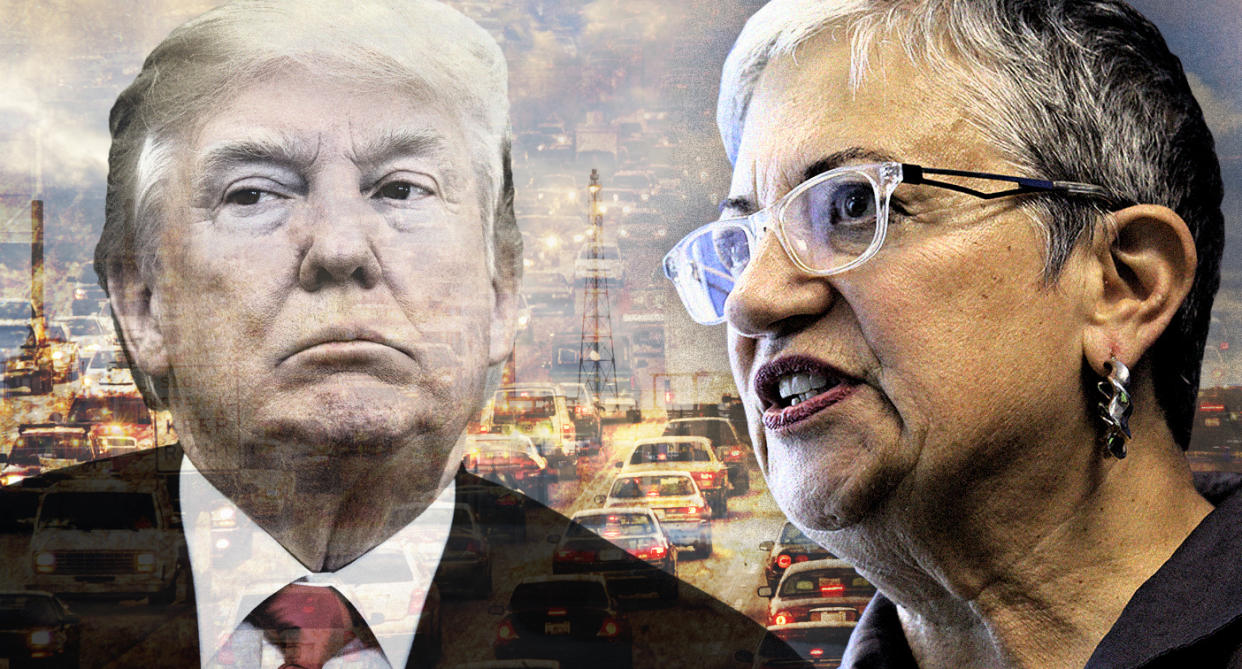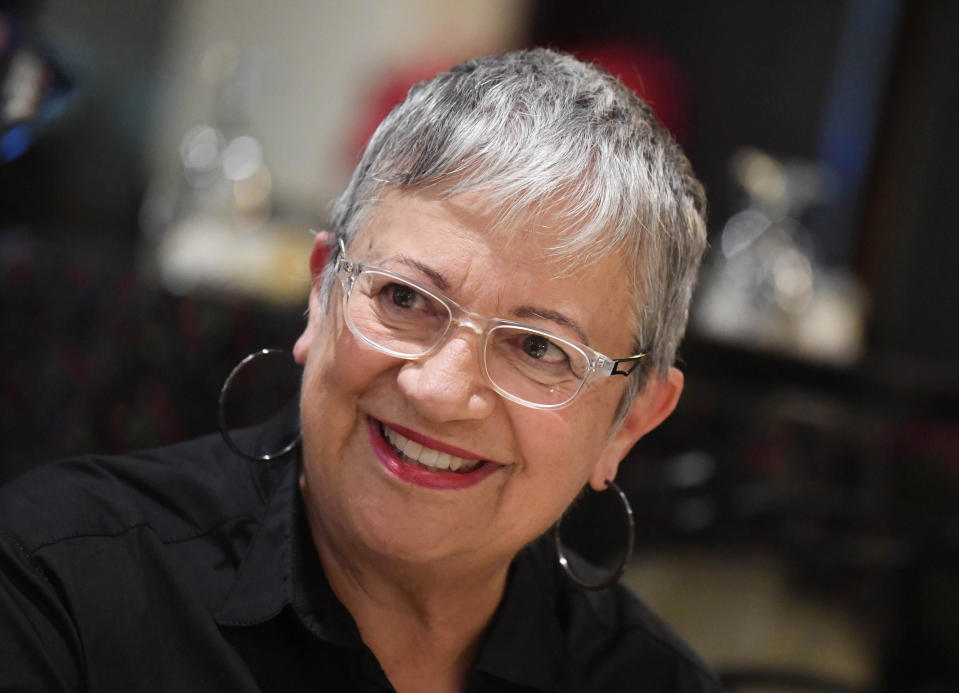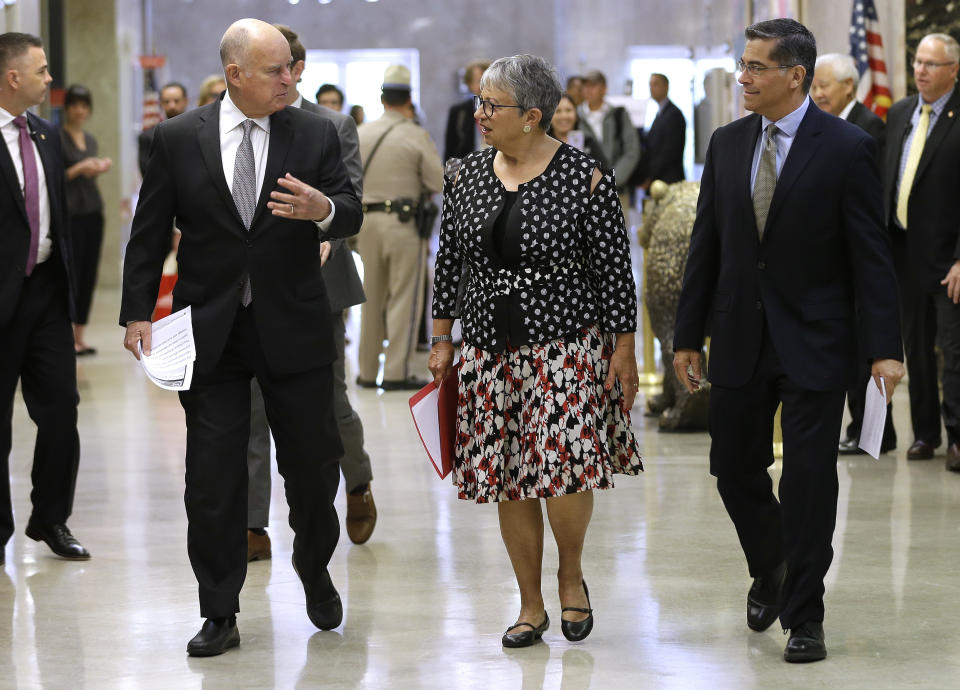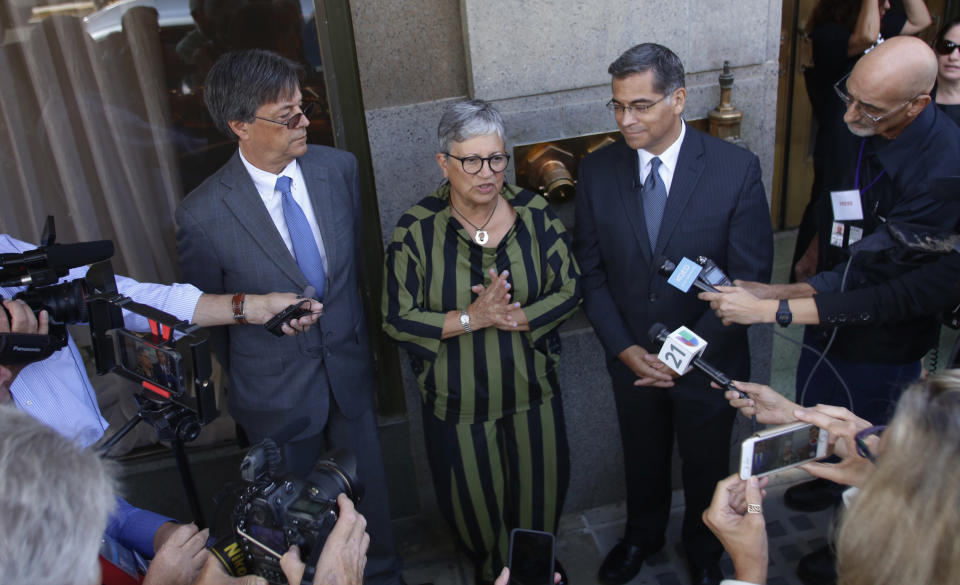Blue states' rights: California’s 'Queen of Green' fights Trump to set stricter pollution rules

The head of California Air Resources Board (CARB) said President Trump’s attempt to rescind the state’s ability to set its own auto-emission targets constitutes an unprecedented “direct assault.”
Mary Nichols, chair of the state agency, is perhaps President Trump’s most powerful foe in his crusade to freeze federal vehicle emission and fuel-economy standards until 2026 and take away California’s right to determine its own stricter standards.
Nichols has spent her entire career advocating for public health and the environment. In 1972, one year out of Yale Law School, she was part of a lawsuit against the Environmental Protection Agency (EPA) for failing to curb air pollution in Los Angeles.
Jerry Brown, during his first stint as California’s governor, appointed Nichols to CARB in 1975 and she rose to the top position in just four years. She led the EPA’s Air and Radiation program, California’s Natural Resources Agency and the Institute of the Environment and Sustainability at UCLA before returning to lead CARB.
In August 2007, Gov. Arnold Schwarzenegger, a Republican and an environmentalist, chose Nichols, the woman called “the Queen of Green” in the press, for the powerful post for a second stint, despite her Democratic Party affiliation, because she was “quite simply the best person for the job.”
Schwarzenegger spoke to Yahoo News last May about his frustration with then-EPA Administrator Scott Pruitt’s plans to end the waiver allowing California to set its own emissions standards.
The Golden State has the authority to set its own standards for auto emissions under the Clean Air Act, predicated on the fact that California has set its own emission standards since the days of hot rods — long before the federal government established its own. The EPA needs to approve California’s waiver request routinely and its denial would have significant consequences outside of the state because 13 additional states have opted into its stricter standards.

Yahoo News reached out to Nichols earlier this month to discuss these issues. The following interview has been lightly edited for length and clarity.
Yahoo News: Why is it important for California to have the ability to set its own auto-emission standards?
Mary Nichols: California has fought for the ability to set more stringent standards because of our recognition that air pollution is a more severe problem here than it is in many parts of the country. We’re a very large market. We drive a lot, buy a lot of cars and use a lot of fuel. We need to do everything we can to minimize the impact of that on health and the environment. There has never been a direct assault on California’s sovereignty like we’re experiencing now. This is really unprecedented.
Why does the Trump administration want to get rid of California’s emission standards?
There are two reasons. One is politically, the current administration sees itself as in opposition to at least the majority of California’s Legislature and people on a whole variety of issues. This is one of the most obvious. But there’s also a deep ideological view on the part of some of the people Trump brought into the administration that they don’t believe there’s anything we can do here and greenhouse gases should not be regulated as air pollutants.
What’s the law say?
Even though the Supreme Court has determined that EPA should regulate greenhouse gases under the Clean Air Act, leadership on this issue is in the hands of a lawyer at the Department of Transportation who litigated on behalf of the auto companies. They lost it twice in district courts and never got a ruling on the Court of Appeals. They believe that if they went back to court with their new judicial appointees that they would have a chance of reversing that position. It’s a setup.

You’ve been on the inside and the outside of the EPA. Is the fact that Trump’s filled the EPA with fossil fuel industry insiders an anomaly or have we been down this road before?
One of George Bush’s chief advisers had been the chief lobbyist for the auto industry, and there have been numerous times people who had careers in the auto industry had been appointed to positions inside EPA, so in this case it’s a matter of degree of their willingness to turn their back on existing law and interpretations and to not even pretend they are interested in clean air or public health.
Do you think it’s fair to say that the judiciary has acted as a bulwark against the excesses of the executive branch on environmental issues in the Trump era? [A federal court recently ruled in favor of New York’s zero-emission credits — affirming the state’s right to make its own decisions around generating electricity.]
I would put it a little bit differently. We’ve always relied on the courts to uphold legislation where Congress took a more progressive position on environmental issues than the administration. Going back to 1970, at least, it’s been necessary for public interest organizations to sue administrations to force them to do things that just seemed politically too hard but were necessary for environmental protection and that Congress had told them to do. There’s a little bit of a nuance here: The courts can be a bulwark against an administration that just refuses to follow the law and they can also be a prod to an administration that’s being timid. They are a necessary counterweight.
This fight over California’s ability to set its own emissions standards has heated up over the past year. Where are we now? What should we expect next?
We actually have 18 pieces of litigation going against the Trump administration over a variety of environmental issues. On the emission standards for automobiles, we only have one at the moment. We challenged a determination by Scott Pruitt when he was the administrator that the standards adopted under the Obama administration were not feasible — although that decision didn’t actually do anything other than set in motion a repeal effort that’s underway. But we thought it was important to put the flag down from the very beginning because we didn’t think he had a factual basis for making that decision. It’s important for people to know that as of today, those standards are in effect. In other words, there’s a proposal that’s been released by the Trump administration that would eliminate California’s waiver and roll back the standards. But they have not actually done anything yet.
What are some other threats to California’s air quality that you’re keeping your eye on that might not have gotten enough attention?
There’s a number of them. Every time you turn around, there’s something new. One that we’re concerned about are their efforts to not enforce existing air quality standards. We’re involved in some litigation about their refusal to take actions that are required to enforce the standards for ozone. There’s the effort to undermine the use of science by restricting the kinds of science that EPA is allowed to look at when deciding what to regulate or how strictly to regulate. They have an effort underway that would prevent the agency from considering the benefits of one type of regulation [if it had been approved for another purpose].

What’s an example of this?
The best example of that would be where they think we can’t look at additional benefits for regulations that were enacted for dealing with global warming. They think the impact of greenhouse gas reduction regulations should be confined to global warming. But any given regulation for that is going to be pretty small, considering we’re dealing with a worldwide phenomenon.
How should that be handled?
Here’s our position and EPA’s position. If you have a regulation that limits emissions from oil and gas operations, the legal authority for that regulation comes from dealing with the impact on global warming, but adopting that regulation will also have benefits for air quality, water quality, toxic contaminates, etc. But you’re not allowed to consider those benefits when you’re calculating the costs and benefits of the regulation? It’s just one more way of trying to make it difficult if not impossible to make any progress on these environmental issues.
And the United Nations just released a special report showing that time is of the essence. [According to the report, to avoid a worldwide crisis, global warming needs to be limited to 1.5 degrees Celsius (or 2.7 degrees Fahrenheit) above preindustrial levels, but we’re on course to exceed this within decades. It said climate change “represents an urgent and potentially irreversible threat to human societies and the planet.”]
One thing I should point out is that litigation is oftentimes slow so that even if you win in the end, it may take years to get a decision from a court — because of briefing schedules and the general way the process is designed to not make anything happen very quickly. While the courts are important to us and we’re relying on them in the long run, we could certainly have four years in which no progress is made even under laws and regulations that are already on the books if the administration refuses to carry them out. There’s quite a bit of this slow walking going on.
Do you have any hope that we’ll be able to make the changes in time to avoid the direr consequences of manmade global warming in the decades to come?
I have hope because I believe that between the cities and states — in the United States and elsewhere — and many in the private sector who have come to believe global warming is a threat to themselves, their employees, their businesses. We’re seeing changes being made regardless [of] the hostility of this administration, but it certainly makes it much more difficult when you’re constantly struggling against the weight of an institution that should be leading and instead is just dead weight on everything we’re trying to do.
_____
Read more from Yahoo News:



